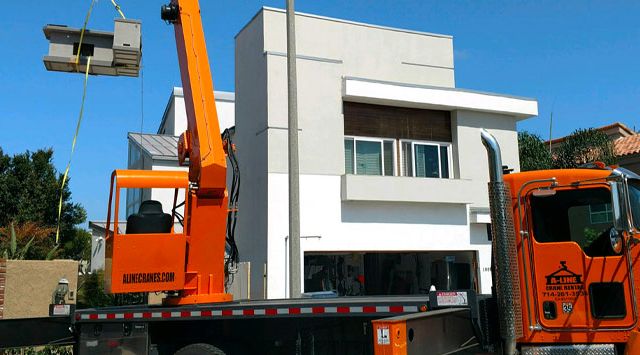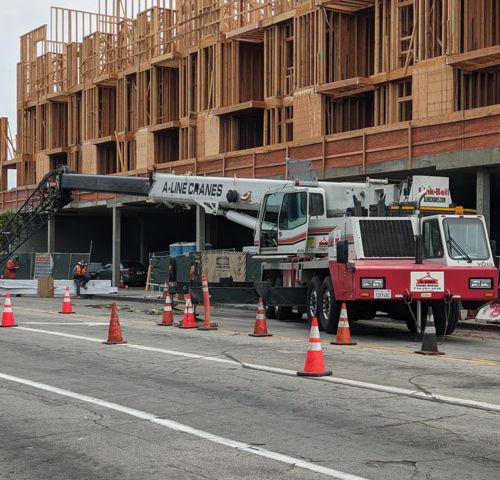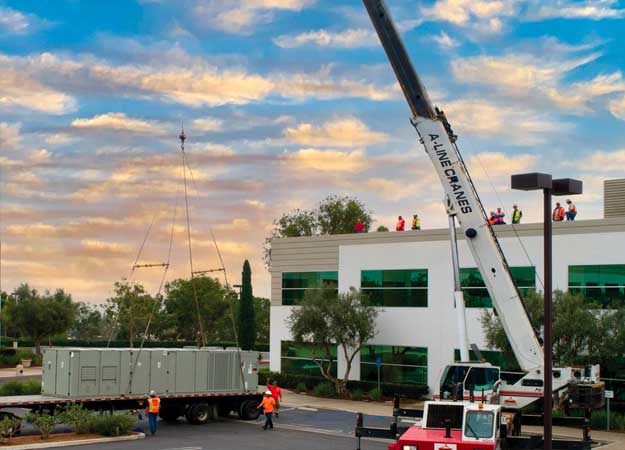Crane and Boom Truck Safety Tips
Table of Contents
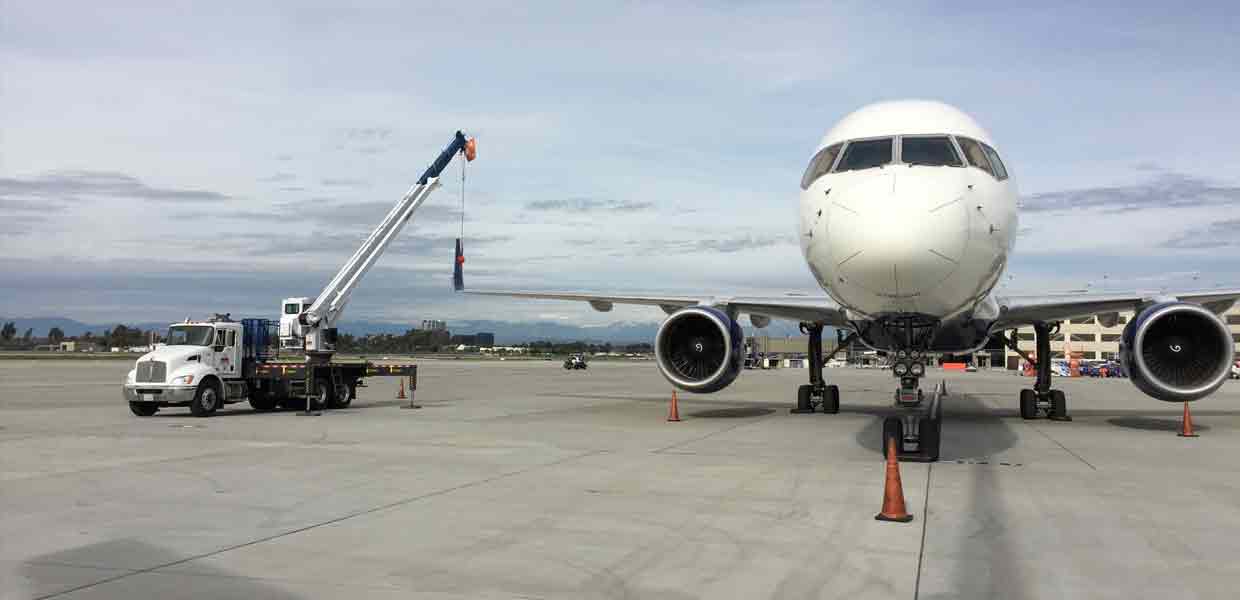
Selecting the Right Crane
Safe crane operations hinge on selecting the appropriate crane for the job. Cranes are categorized as either mobile or stationary, with the latter typically deployed in industrial environments or for projects that are either highly complex or involve significant heights.
For mobile cranes, which are available in a range of types, choosing one that suits the specific requirements of the site is crucial.
Crawler Cranes: These are ideal for softer ground conditions, thanks to their track-based movement, offering stability where wheeled vehicles might struggle.
- Rough-Terrain Cranes: Designed for challenging site conditions, these cranes excel in navigating difficult landscapes but are not suitable for public roadway travel.
- All-Terrain Cranes: Offering the best of both worlds, these cranes can independently travel to sites and are adept at managing rough terrain once on-site.
- Boom Trucks: Featuring a telescopic or fixed boom mounted on a commercial truck chassis, boom trucks are versatile for quick deployments and are particularly useful for tasks requiring reach and mobility.
- Hydraulic Cranes: Known for their power and reliability, hydraulic cranes offer precise lifting capabilities and can be adapted to a wide range of lifting needs, from construction to logistics.
NCCCO Certified Operators
Safety begins with the people operating the cranes. Following OSHA mandates, A-Line ensures all personnel involved in crane operations are thoroughly trained and certified, guaranteeing expertise in rigging, signaling, and operating the cranes safely.
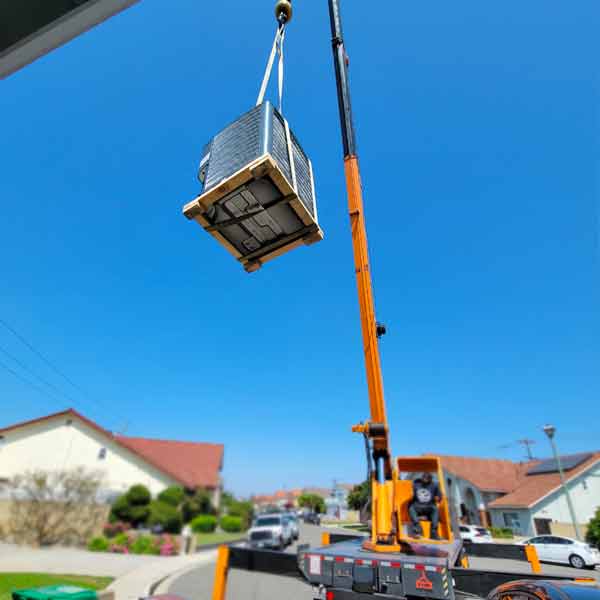
Crane Familiarization
Planning Crane Travel Routes
Before moving a crane, several critical steps need to be taken:
- Planning the Path: Ensure a clear route is planned, free from any obstacles.
- Avoiding Hazards: Identify immovable hazards like power lines or permanent structures and plan to avoid them. Operators must maintain a safe distance at all times, adhering to regulations such as keeping the crane at least 10 feet away from power lines up to 50,000 volts.
- Using a Signal Person: A signal person should lead the crane during its travel. This role involves:
- Alerting the crane operator to any potential hazards along the path.
- Warning other site personnel of the crane’s movement to ensure safety.
Routine Crane Operator Checklist
To ensure the crane’s safety before use, a crane operator is required to follow a comprehensive daily inspection checklist. This checklist encompasses several critical assessments:
- Safety System Inspections: The priority is to conduct checks on the crane’s safety systems to avert any accidents. This involves inspecting the anti-two block system, capacity limits, and the proper deployment of outriggers.
- Pre-Start Assessments: Before activating the crane, essential components like tire integrity, oil levels, seatbelts, the air reservoir, and battery condition need to be examined.
- Engine Start-Up Evaluations: At the beginning of the day, after starting the engine, the operator must review the pressure gauge, fuel levels, turn signals, horn, suspension, and braking system among other critical elements.
- Hydraulic System Checks: A series of evaluations on the hydraulic system are also crucial and should be carried out as part of the inspection routine.
Operators are advised to refer to the specific daily operator checklist provided at their site, which details over 40 tasks to be checked to maintain crane safety and operational integrity.
Ensuring Crane Stability

Precision in Rigging
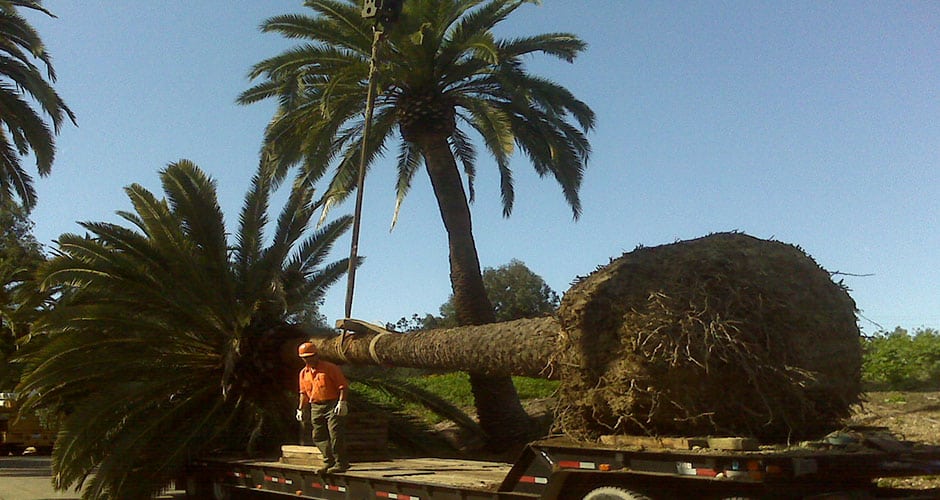
Understanding Load Radius
To ensure safe crane operation, several key aspects need to be understood:
- Understanding Crane Mechanics: It’s critical to know how a crane functions and the forces that impact its operation.
- Load Radius Concept:
- The load radius indicates that a load’s distance from the crane’s center affects its lifting capacity. The farther the load, the less weight the crane can handle without risk of tipping or collapse.
- Consulting the crane’s load chart is the most reliable method to determine its lifting capacity.
- Factors Influencing Load Radius:
- Boom Angle:
- A higher boom angle, pointing upwards, brings the load closer to the crane’s center, allowing for more weight to be lifted.
- A lower boom angle, closer to horizontal, positions the load further from the crane’s center, reducing the weight it can safely lift.
- Telescopic Extensions: The length of extensions on a telescopic crane also affects the load radius, impacting the crane’s lifting capability.
– Load Radius: This principle highlights that the farther the load is from the crane’s center, the less weight the crane can support without the risk of tipping over or collapsing.
Key factors influencing load radius include:
- Boom Angle: The load’s proximity to the crane’s center line is affected by the boom’s angle.
- When the boom’s angle is elevated (aiming upwards), the load is nearer to the crane’s center line, allowing the boom to support more weight.
- Conversely, when the boom’s angle is reduced (nearer to being horizontal), the load moves away from the crane’s center line, decreasing the boom’s weight capacity.
- Telescopic Extensions: The length of any extensions on a telescopic crane also plays a crucial role in affecting the load radius.
- The most reliable method to determine a crane’s load capacity is by consulting the load chart specific to each crane model.
Observing Load Limits
Even though modern cranes are equipped with load moment indicators and rated capacity limiters, it’s crucial for crane operators to understand how to interpret load charts to ensure a lift is executed safely. When evaluating load charts for safe lifting parameters, consider several key factors:
- The distinction between being on rubber (tires) and using outriggers is significant. A crane supports a greater weight when stabilized on outriggers compared to when it is merely on its tires. The load chart reflects this difference in capacity with separate columns.
- The weight a crane can support varies with the boom’s position. More weight can be sustained when the boom is positioned over the front of the crane for the duration of the lift. If the boom needs to rotate, the crane’s capacity decreases, which is indicated in the load chart.
- The concept of load radius plays a vital role in determining how much weight the crane can safely lift; a greater load radius typically means a reduced lifting capacity. Since load charts may not detail every possible radius, it’s advised to consult the next highest radius mentioned to remain within safe operational limits.
Understanding these aspects of the load chart is fundamental to planning a lift that is both safe and effective, helping to avert crane malfunctions or accidents.
Clear Communication
To ensure cranes operate safely, there’s a universally recognized set of hand signals and communication guidelines. These are crucial for a qualified signal person to convey clear instructions to the crane operator during the lift, allowing for adjustments based on real-time changes. By mastering these standard hand signals, individuals can effectively indicate to the crane operator how to maneuver the crane, including the direction to move, when to swing and elevate the boom, when to raise or lower the load, and when to halt all operations. Beyond hand signals, radio communication plays a vital role in maintaining continuous dialogue between the signal person and the crane operator, ensuring smooth and safe crane operations.
A-Line Crane embodies the pinnacle of safety and operational excellence in crane services. By meticulously selecting the appropriate cranes, employing NCCCO certified operators, and strictly adhering to OSHA compliance, we ensure the highest standards of safety and efficiency. Our comprehensive approach—from rigorous daily inspections and clear communication to expert management of complex lifts—demonstrates our unwavering commitment to safety and precision. A-Line Crane’s dedication to these principles makes us the trusted choice for construction projects, reinforcing our reputation as a leader in the crane rental industry.

Transforming Renovation and Retrofitting with Crane Technology Table of Contents The renovation and retrofitting industry plays a crucial role in…
The Role of Cranes in Streamlining Modular Construction Table of Contents Modular construction, a method where buildings are prefabricated in…
How Cranes Elevate the Roofing Industry Table of Contents In the roofing industry, efficiency, safety, and precision are key to…
Steel Erection Crane Company Table of Contents The Mobile Crane and Steel erecting In the construction industry, structural steel stands…
Building Material Crane Services Table of Contents In the fast-paced world of construction, the ability to move and manage building…
Safety Tips for Installation of HVAC Units Hydraulic Cranes or Boom Trucks Table of Contents https://www.youtube.com/watch?v=mJbQnarATPo Safety Tips for Crane…
Important Types of Crane and Rigging Equipment Table of Contents Are you gearing up for a major construction venture or…
What Is a Boom Truck? Table of Contents Exploring the Multifaceted Boom Truck: A Construction Workhorse In the dynamic world…



